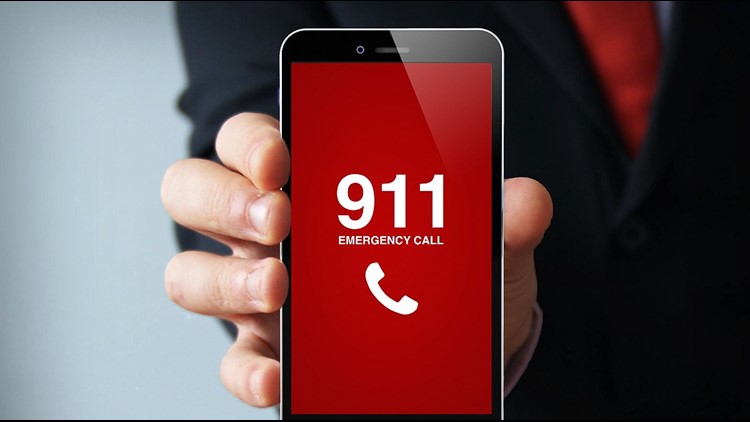ST. LOUIS COUNTY, Mo. – 911 may not always be able to find you due to your wireless carrier, even if there are other sources that can find you within seconds.
Fox 2 News visited the highly respected St. Louis County 911, where the staff is armed with the latest technology for operating enhanced emergency responses.
“Under (current FCC regulations) they’re only required to give you that location 66 percent of the time and only within a football field,” said David Lucas, a 911 specialist.
A call from inside the county’s 911 call center was traced back to a cellphone tower approximately 1.3 miles away.
Operators know the first hit (also known as a “rebid”) is not always precise, so they try more than once before confirming a location.
“So he’s asking for a better location,” Lucas said. “So it reaches back out, finds your latitude and longitude, and brings it back. That’s a 30-second process.”
When trying to find a news crew, the second attempt was successful.
“Now, I actually show you at Olendorf Park, which is at 1150 Hannah Road,” the operator said.
He found our news crew, which was using Verizon as the carrier. However, the results changed when the news crew switched cell service providers, and Sprint returned a nearly immediate response, which was right.
“Just like any service, different carriers provide different levels of service based on where they are and also on the volume,” Lucas said.
One of the most publicized cases involving 911 failing to find someone was last year in Georgia. A caller told 911 the nearby street names after driving her car into a lake, but her call went to a different county, causing enough of a delay that she drowned.
The FCC says improving location data from wireless providers “could save about 10,000 lives each year,” so the government’s making demands. Five years from now, cellphone companies will have to pinpoint you to an area half the size of a football field – not every time, but in four out of every five calls.
However, right now you can sit in the middle of a park and order an Uber, and it picks you up at the precise, pinpointed location.
When asked for an explanation, our 911 specialist said Uber simply utilizes better technology at the moment.
“Those applications are using technology we don’t have in the 911 centers yet,” Lucas said. “A lot of that is because we’ve been around so long, you know, when you don’t have an installed base it’s quite easy to use a new application, but when you have to bring along the old infrastructure and the way of doing things, it’s a slower migration. And it’s expensive and not everyone has the funds.”
Lucas explained that the results might change if you travel.
“If you go to another place in the country, it would be opposite. Verizon would be first and AT&T would be second. So it depends on where you live and where you place that call from,” he said.
Lucas added that the results get worse when dealing with lesser known service providers.
“Just like any service, different carriers provide different levels of service depending on where you are and also on the volume,” he said.
R.D. Porter used to be Missouri’s coordinator. He said the danger is in 911 centers buying the wrong technology.
“It happens quite often. Our directors are very smart and good at what they do, but they’re not contract specialists,” he said. “They’re not technologists and it’s difficult to understand how this stuff works.”
Porter told Fox 2 News about a 911 center in Missouri that recently spent hundreds of thousands of dollars on new equipment, only to realize it didn’t have what it needed. He would not name the specific center.
Porter has helped 911 centers get millions in grant money. His former colleague in state government gave him a gold star for his efforts.
“I got him $3.4 million in grant money. Everybody said, ‘You can’t do that.’ Well, don’t tell me I can’t do something,” he said.
Here’s a breakdown of our four test calls from inside the St. Louis County 911 Communications Center:
Test #1: an iPhone with Verizon
• After 32 seconds and a “rebid,” the 911 operator placed us in the building.
Test #2: an HTC phone with Sprint
• An operator placed me in the park outside of the building within 11 seconds.
• After a “rebid,” he placed me in the building after 46 seconds.
Test #3: iPhone with Verizon
• An operator placed me near a cell phone tower 1.3 miles away.
• After a rebid, an operator placed me at the same cell phone tower.
• After a third try and 81 seconds, the operator placed me at an address on a different street, nearly three football fields away.
Test #4: iPhone with AT&T
• An operator placed me near a cell phone tower 1.3 miles away.
• In 30 seconds and after a “rebid,” the 911 operator placed me at an address on a different street, nearly three football fields away.



